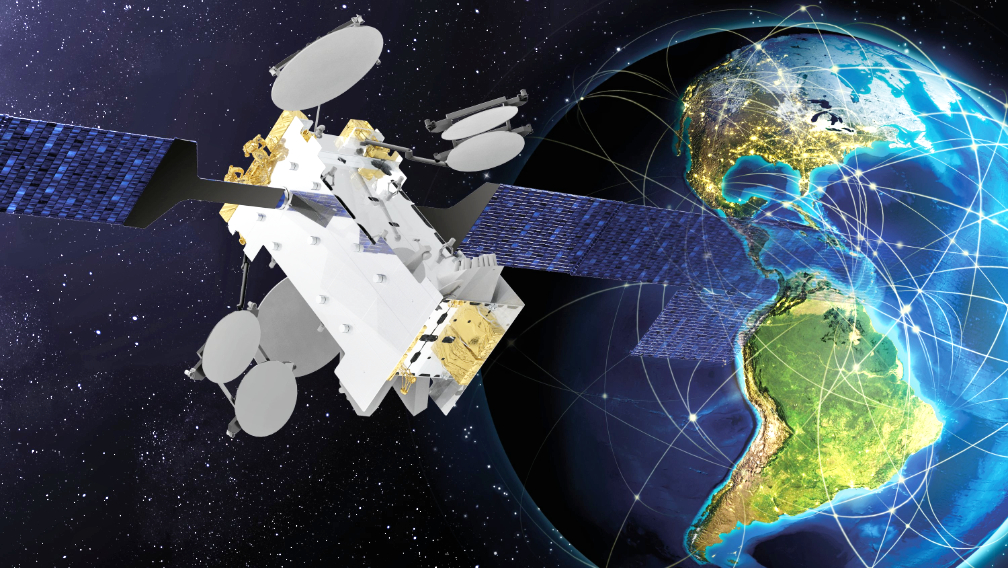
HISPASAT has signed an agreement with Tele Greenland A/S, the national communications company in Greenland, to lease space capacity on the Amazonas Nexus satellite until the end of its lifetime. The new Amazonas Nexus will be launched in the second half of 2022 and will include a dedicated payload for the mission.

The agreement will make it possible for Tele Greenland A/S to improve Internet access in all remote towns and villages in North and East Greenland served today by satellite. This capacity will also allow to provide corporate services to mining companies and serve as back-up system to restore communication services in emergency situations. Building infrastructure and providing internet services to Greenland via satellite is a challenge in itself. Very low levels of geo-stationary satellite elevation far north of the Arctic Circle, combined with extreme winds, snowfall, and very low winter temperatures, create a very demanding environment for the ground equipment.
A payload of 800 MHz in Ku band, especially designed to provide coverage to Greenland, will be embarked in HISPASAT’s Amazonas Nexus satellite, which is currently under production by Thales Alenia Space and is planned to be launched during the second half of 2022. The dedicated mission will be known as Greensat. The name underscores the parties’ long-term strategic partnership to provide huge improvements for Greenland’s most remote communities. Greensat’s capacity will allow Tele Greenland A/S to improve Internet access in all remote towns and villages in North and East Greenland. Greensat will be accompanied by significant investments in ground stations and local 4G access.
Over the last ten years, Tele Greenland has invested heavily in submarine fiber cables and a microwave system, which provide high speed, flatrate internet to more than 92% of the population of the region. However, there are more isolated towns where the quickest and most efficient solution is connection via satellite.
The Amazonas Nexus is a High Throughput Satellite (HTS) designed with an innovative architecture that combines Ku and Ka bands to optimize communications and multiply the capacity available for commercial use. The satellite will also feature the latest generation Digital Transparent Processor (DTP), a technological advance that will be able to digitally process the satellite’s received signals and increase its flexibility in orbit. The new, state of the art satellite will have coverage over the entire American continent, the North and South Atlantic corridors(both areas with major aerial and maritime traffic) and Greenland. The satellite position at 61º West is ideally located to reach even the northernmost villages in the region.
“It is a great milestone for us to be able to announce that Greenland will be getting part of a satellite, which will be sent out into space and future proof the satellite connection in the whole country. Our technicians, partners, and suppliers are working hard to ensure that we can deliver a better solution for our customers, and it is amazing to think that we are working on solutions in space as well as on earth, at different destinations in Greenland, to ensure better solutions for our customers. Satellite connections do not have the same high speed and quality as the submarine cable and radio chain on the west coast. It is therefore important for us to invest in technology solutions that can benefit all of Greenland,” said CEO Kristian Reinert Davidsen, Tele Greenland. “We are very proud in Greenland that this specific capacity will be called Greensat, as it has really been the missing piece in our puzzle to secure connections all over the country. Even for the small population in our remote communities we need improved capacity to provide Internet connectivity for education, health and government services, and of course for entertainment.”
Miguel Ángel Panduro, CEO of HISPASAT, has hailed the importance of this strategic agreement “which means the start of a long-term relationship with Tele Greenland who we would like to thank for their trust in HISPASAT in choosing us as a communications service provider for Greenland”, he stated. Panduro highlighted the versatility and robustness that characterize satellites, “the only infrastructure capable of bringing high-quality connectivity to the most remote or inhospitable locations, from the Amazon jungle to the polar regions.”
